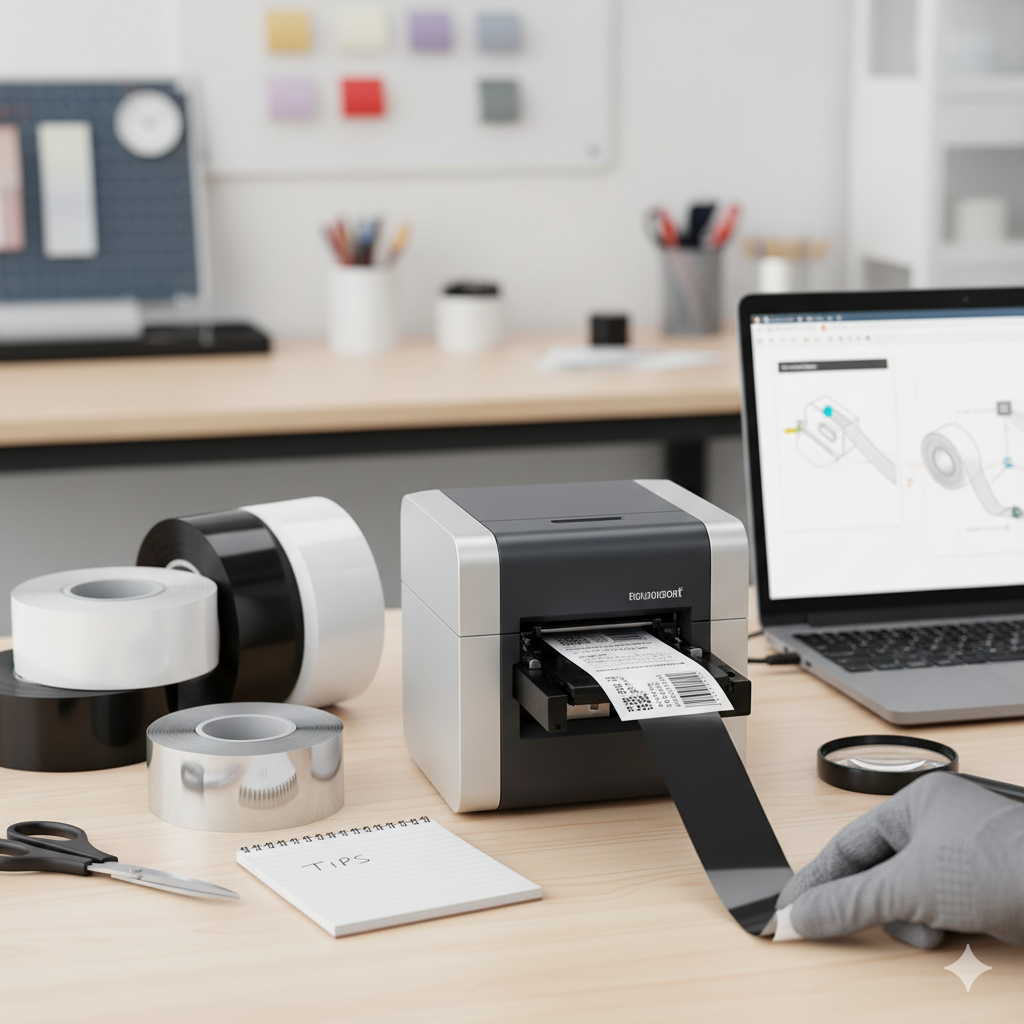
Tips for Using Thermal Transfer Ribbons
Thermal transfer ribbons play a crucial role and are important in the production of high-quality labels.
They generate prints that are great against smudging, heat, and moisture. To achieve a good result, it is important to handle and utilize them correctly.
Here are tips to assist you in keeping your ribbons, minimizing waste, and ensuring clear, professional printing outcomes.
1. Store Ribbons in the Right Conditions
Keep your ribbons in a cool, dry area. Avoid direct sunlight or heat sources. Excess heat weakens the ribbon coating, which affects print quality.
Maintain a temperature below 25°C and humidity between 40% and 60%. Store ribbons in their original packaging until you are ready to use them.
2. Match the Ribbon to the Label Material
Different labels require specific ribbon types. Using the wrong one leads to smudges or fading.
- Wax ribbons work best for paper labels.
- Wax-resin ribbons suit semi-gloss or synthetic materials.
- Resin ribbons are ideal for polyester or polypropylene labels that need extra durability.
Always match the ribbon to your label material and printing application.

3. Install the Ribbon Correctly
Improper installation leads to uneven printing or ribbon wrinkles. Follow your printer’s loading guide carefully.
Ensure the ribbon is wound tight on the roll and properly aligned with the printhead.
Use the correct ribbon width for your label. A ribbon that is too narrow leaves the edges unprotected, which damages the printhead.
4. Clean the Printhead Regularly
Dirt and debris on the printhead reduce print clarity. They also shorten the lifespan of both the printhead and ribbon.
Clean the printhead after every ribbon change using a lint-free cloth and approved cleaning solution. This prevents streaks and smudges on your labels.
5. Adjust Print Speed and Darkness Settings
Each ribbon type works best under certain printer settings. If the print looks too light or too dark, adjust the print speed or heat level.
Lower print speeds often improve quality. Increasing darkness too much can wear the ribbon coating faster. Find the right balance for your printer and ribbon type.
6. Avoid Touching the Ribbon Surface
Fingerprints, dust, or oils from your hand affect how the ribbon transfers ink. Always handle ribbons by the edges or use gloves.
Keep the printing area clean to prevent contamination that affects print quality.
7. Use Compatible Ribbons for Your Printer Model
Not every ribbon fits every printer. Using the wrong core size or ink orientation causes feed issues or print misalignment.
Check your printer specifications for compatibility before purchasing.
8. Watch for Common Problems
If your labels appear streaked, wrinkled, or faded, inspect the ribbon alignment and tension.
A loose ribbon or misaligned roll causes uneven printing. Replace ribbons that show visible wrinkles or folds.
9. Test Before Large Runs
Before printing large batches, run a short test. Check print clarity, barcode readability, and durability. This saves time and reduces waste.
10. Dispose of Used Ribbons Properly
Used ribbons contain residual ink. Dispose of them following your local waste management guidelines. Do not leave them near heat or sunlight.
Why Proper Use Matters
Thermal transfer ribbons affect both cost and quality. Poor handling leads to wasted materials, reprints, and machine damage. Following these steps ensures your printer operates smoothly and your labels remain sharp and professional.
Key Takeaways
- Match the ribbon type to your label material.
- Clean the printhead often.
- Store ribbons correctly.
- Handle ribbons with care.
-
Test print settings before large jobs.
